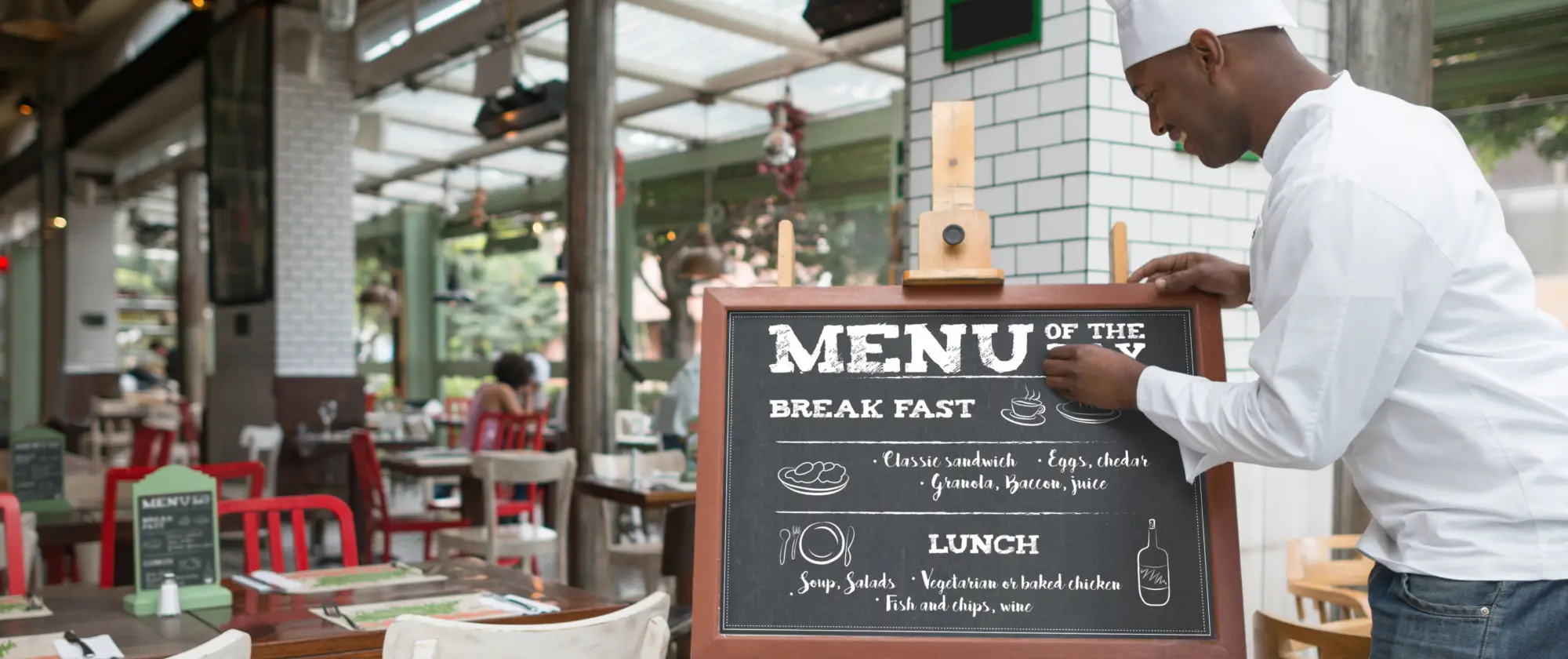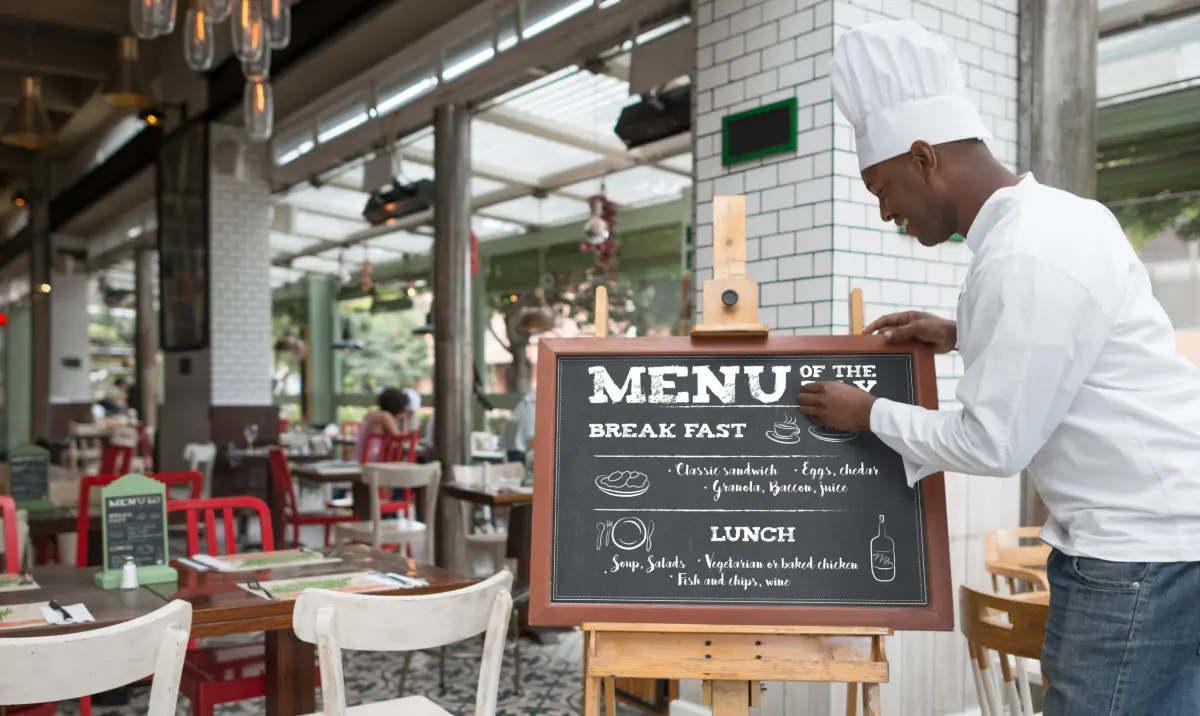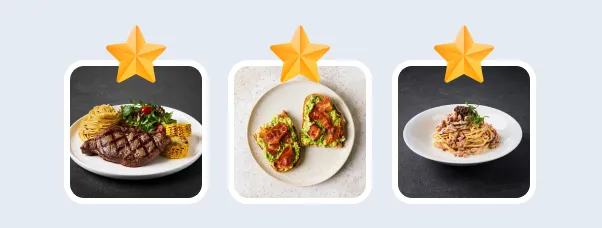

Menu Engineering: Increase Your Restaurant Profits
In the competitive restaurant industry, every detail matters, and your menu is no exception. A well-designed menu isn’t just a list of items; it’s a strategic tool that can significantly impact your bottom line. Menu engineering is the art and science of creating a menu that not only appeals to customers but also maximizes your profits.
By analyzing customer preferences, food costs, and profitability metrics, you can craft a menu that highlights your most profitable items and encourages customers to order them. Whether you’re running a fine-dining establishment or a casual eatery, understanding and applying menu engineering techniques can transform your restaurant’s financial performance.
In this guide, we’ll explore every aspect of menu engineering—from analyzing your current menu’s performance to designing a layout that drives sales. Get ready to unlock the full potential of your menu and take your restaurant’s profitability to the next level.
What Is Menu Engineering?
Menu engineering is more than a buzzword in the restaurant industry; it’s a proven methodology that combines psychology, data analysis, and strategic design to optimize menus for profitability. By focusing on the placement, pricing, and promotion of menu items, restaurant owners can influence customer choices and increase revenue. Let’s break down what menu engineering entails and why it’s essential for your restaurant’s success.
Definition and Purpose of Menu Engineering
Menu engineering is the strategic process of analyzing and improving your menu to maximize profitability and enhance customer experience. This involves evaluating each menu item’s profitability and popularity to identify opportunities for optimization.
- Key components of menu engineering:
- Profitability: How much each item contributes to your bottom line.
- Popularity: How often customers order specific dishes.
- Design: The visual and psychological elements that influence customer choices.
With a clear understanding of these factors, restaurant owners can make informed decisions to adjust pricing, highlight high-margin items, and refine menu layouts. The purpose is simple: create a menu that not only looks appealing but also drives higher profits.
Key Benefits of Menu Engineering
Implementing menu engineering offers a range of benefits that go beyond just boosting profits. Here’s why it’s worth your time:
- Increased profitability:
- Highlights high-margin items to increase sales.
- Eliminates low-performing dishes that drag down earnings.
- Streamlined operations:
- Reduces kitchen complexity by focusing on profitable and popular items.
- Simplifies inventory management with a more focused menu.
- Enhanced customer experience:
- Guides customers to the best options using strategic design.
- Provides clarity and reduces decision fatigue for diners.
When done right, menu engineering aligns your business goals with customer preferences, creating a win-win situation that drives long-term success.
How to Analyze Your Menu Performance
Analyzing your menu performance is the foundation of menu engineering. It helps you identify which dishes are driving profits, which are underperforming, and how customer preferences influence your sales. This process involves a combination of data analysis, customer feedback, and strategic categorization of your menu items.
Conducting a Menu Item Profitability Analysis
Profitability analysis focuses on understanding how much profit each menu item contributes to your business.
- Steps to analyze profitability:
- Calculate food costs: Break down the cost of ingredients for each dish.
- Determine selling price: Compare menu prices to food costs to calculate the profit margin.
- Use contribution margin: Identify the dollar amount earned per dish after deducting food costs.
A detailed profitability analysis allows you to pinpoint which dishes are worth promoting and which need re-evaluation. For example, high-cost items with low profit margins might need price adjustments or ingredient substitutions.
Understanding Customer Preferences
Knowing what your customers love—and what they don’t—can help you tailor your menu to their tastes.
- Ways to understand customer preferences:
- Analyze sales data: Look for patterns in popular and frequently ordered dishes.
- Leverage customer feedback: Use online reviews, comment cards, and surveys to gain insights.
Understanding your audience helps you focus on items that resonate with your diners while rethinking dishes that consistently underperform. For instance, if a high-margin item isn’t selling well, you might explore whether the presentation or description needs improvement.
Segmenting Menu Items for Success
To effectively optimize your menu, categorize items based on their profitability and popularity. This process is called menu item segmentation.
- The four main categories:
- Stars: High profitability, high popularity—promote these dishes prominently.
- Plowhorses: Low profitability, high popularity—optimize pricing or portion sizes.
- Puzzles: High profitability, low popularity—improve their appeal through better descriptions or placement.
- Dogs: Low profitability, low popularity—consider removing these from your menu.
Segmenting your menu items gives you a clear roadmap for menu adjustments. For instance, promoting “Stars” or tweaking “Puzzles” can significantly enhance your profitability.
Designing a Profitable Menu
Designing a menu that drives profitability goes beyond aesthetics. It requires strategic planning to ensure your menu layout, descriptions, and pricing guide customers toward making choices that benefit your bottom line. Let’s explore how to create a menu that not only looks great but also boosts sales.
Optimizing Menu Layout and Design
Your menu’s layout plays a crucial role in influencing customer choices. A well-designed menu can highlight profitable items and subtly guide diners to order them.
- Best practices for menu layout design:
- Use the “Golden Triangle”: Customers’ eyes naturally scan the center, top-right, and top-left of the menu first. Place your high-margin items here.
- Incorporate visual elements: Use boxes, borders, or icons to draw attention to key dishes.
- Limit options: Avoid overwhelming customers by keeping the menu concise, with 5-7 items per category.
Effective menu design not only enhances the dining experience but also ensures customers gravitate toward the dishes that maximize your profits.
Writing Descriptive Menu Item Names
The way you describe your dishes can significantly influence how appealing they are to customers. Sensory and emotionally engaging descriptions can make dishes irresistible.
- Tips for writing menu descriptions:
- Highlight ingredients and preparation methods (e.g., “Wood-Fired Artisan Pizza”).
- Use sensory words to evoke taste, smell, and texture (e.g., “Buttery, Crispy, Savory”).
- Create an emotional connection by telling a story (e.g., “Grandma’s Classic Apple Pie”).
Thoughtfully crafted descriptions can elevate the perceived value of your dishes, encouraging customers to order higher-margin items.
Pricing Strategies for Menu Engineering
Pricing is one of the most powerful tools in menu engineering. The right pricing strategy can make your dishes more appealing while maximizing profits.
- Key pricing tactics:
- Psychological pricing: Use prices like $9.99 instead of $10 to make items feel more affordable.
- Avoid dollar signs: Research shows that menus without currency symbols reduce cost-consciousness.
- Anchor pricing: Place premium-priced items near mid-range dishes to make the latter seem like better value.
By strategically setting and displaying prices, you can subtly encourage customers to spend more without feeling pressured. This balance is key to maintaining a positive dining experience while boosting revenue.
Leveraging Data for Continuous Improvement
Menu engineering is not a one-time task—it’s an ongoing process that requires continuous monitoring and adaptation. Leveraging data allows you to track performance, test changes, and refine your menu to meet evolving customer preferences and market trends.
Tracking Menu Performance Metrics
To improve your menu, you need to measure its performance regularly. This involves monitoring key metrics to understand what’s working and what isn’t.
- Essential performance metrics to track:
- Sales data: Analyze which dishes are selling the most and which are lagging.
- Contribution margin: Assess profitability for each menu item after accounting for costs.
- Customer satisfaction: Use surveys and reviews to gauge how well customers respond to your menu.
- Turnover rate: Monitor how quickly high-margin items sell out.
Tracking these metrics gives you actionable insights, helping you make data-driven decisions about which items to promote, modify, or remove.
Testing and Iterating Your Menu
Once you’ve gathered data, the next step is to experiment with changes and test their impact. Testing allows you to identify the best strategies for maximizing sales and profits.
- How to test and iterate your menu:
- Rotate seasonal items: Introduce limited-time offers (LTOs) to gauge customer interest in new dishes.
- Conduct A/B testing: Test different menu designs or descriptions to see which versions perform better.
- Experiment with pricing: Slightly adjust prices on select items to find the sweet spot for profitability and customer satisfaction.
- Monitor customer behavior: Use digital menu analytics or point-of-sale (POS) reports to track changes.
By continually testing and iterating, you can refine your menu over time, ensuring it stays profitable, appealing, and aligned with customer preferences. This proactive approach keeps your restaurant competitive in a constantly changing market.
The Role of Technology in Menu Engineering
Technology has become an indispensable tool for modern menu engineering. From data analysis to real-time updates, leveraging technology can streamline the menu optimization process, enhance customer experiences, and boost profitability.
Using Menu Engineering Software
Menu engineering software simplifies the process of analyzing and optimizing your menu. It provides insights that would take significant time and effort to calculate manually.
- Features of effective menu engineering software:
- Automated data analysis: Tracks profitability and popularity for each item.
- Visual tools: Generates charts and heatmaps for menu performance.
- Integration with POS systems: Pulls real-time sales data for accurate analysis.
- Recommendation engines: Suggests which items to promote, adjust, or remove.
For example, software like Menuviel offers detailed analytics, helping you make data-driven decisions to maximize your profits. These tools save time and provide clarity, allowing you to focus on other aspects of your business.
Integrating Digital Menus for Better Insights
Digital menus offer flexibility and valuable data that traditional paper menus can’t match. They allow you to adapt quickly to changing trends and customer preferences.
- Benefits of digital menus:
- Real-time updates: Easily adjust prices, descriptions, and availability without reprinting.
- Interactive features: Highlight popular or high-margin items with animations or visuals.
- Data collection: Track how customers interact with the menu, such as which items they view most or add to their orders.
- Enhanced customization: Offer personalized suggestions based on customer history or preferences.
Digital menus not only enhance the customer experience but also provide valuable insights into ordering patterns, helping you fine-tune your menu for maximum impact.
By embracing technology, restaurants can gain a competitive edge, optimize their menus with precision, and adapt swiftly to market changes. Investing in these tools ensures your menu remains a powerful driver of profitability.
Real-Life Examples of Successful Menu Engineering
Learning from real-world examples is one of the best ways to understand the power of menu engineering. By studying how successful restaurants have optimized their menus, you can gain actionable insights and avoid common pitfalls.
Case Studies of Profit-Boosting Menus
Many restaurants have dramatically improved their profitability by applying menu engineering principles. Here are a few noteworthy examples:
- Fast-Casual Chain:
- A popular fast-casual chain conducted a profitability analysis and identified its “Puzzles”—high-margin but underperforming items.
- Action: Redesigned the menu layout to place these items in the “Golden Triangle” and added enticing descriptions.
- Result: A 15% increase in sales of these items within six months.
- Upscale Bistro:
- An upscale bistro noticed its high-profit “Plowhorses” were often under-ordered because they seemed overpriced.
- Action: Adjusted portion sizes slightly to reduce food costs while maintaining the same selling price.
- Result: Improved contribution margins without impacting customer satisfaction.
These cases highlight how small, strategic changes can have a significant impact on profitability.
Lessons Learned From Common Menu Mistakes
While many restaurants find success through menu engineering, others serve as cautionary tales when it comes to common pitfalls:
- Overloading the Menu:
- A restaurant with too many items on its menu found customers overwhelmed and unable to make decisions.
- Lesson: Streamline your menu to focus on high-performing items and reduce decision fatigue.
- Ignoring Data:
- A diner ignored its sales data and continued offering a “Dog” item (low-profit, low-popularity) because it was a staff favorite.
- Lesson: Rely on data-driven decisions rather than personal preferences to optimize your menu.
By studying both successes and mistakes, you can refine your approach to menu engineering and achieve better results for your restaurant.
Actionable Tips to Start Menu Engineering Today
Ready to boost your restaurant’s profitability with menu engineering? Here are practical steps you can implement right away to optimize your menu and maximize revenue.
Quick Wins for Immediate Results
If you’re looking for immediate improvements, focus on these simple but effective actions:
- Identify high-performing items:
- Use sales data to highlight your “Stars” (high-profit, high-popularity items).
- Feature these items prominently on your menu using design elements like boxes or bold text.
- Enhance item descriptions:
- Update menu descriptions with sensory and emotionally engaging language.
- Include details about ingredients and preparation methods to add perceived value.
- Adjust pricing on underperforming items:
- Experiment with psychological pricing (e.g., $9.99 instead of $10).
- Remove currency symbols to reduce cost-consciousness.
These quick wins can have an immediate impact on sales and customer behavior with minimal effort.
Building a Long-Term Strategy
For sustainable success, adopt a long-term menu engineering strategy that includes regular evaluations and adjustments.
- Schedule periodic menu reviews:
- Analyze sales and profitability data quarterly to identify trends.
- Rotate seasonal or limited-time items to keep the menu fresh.
- Train your staff:
- Educate your team on high-margin items so they can upsell effectively.
- Encourage staff to gather customer feedback for continuous improvement.
- Incorporate technology:
- Use menu engineering software to streamline data analysis and performance tracking.
- Leverage digital menus to make real-time updates and test changes.
By combining immediate actions with long-term planning, you can transform your menu into a powerful tool that drives both customer satisfaction and profitability. Start today, and watch your results grow over time.
Key Takeaways
Menu engineering is a powerful strategy that can transform your restaurant’s profitability and customer experience when applied effectively. Here are the key points to remember from this guide:
- Understand your menu’s performance: Regularly analyze sales data, food costs, and customer preferences to identify your top-performing and underperforming items.
- Optimize your menu design: Use strategic placement, descriptive language, and effective pricing techniques to guide customers toward high-margin items.
- Leverage technology: Tools like menu engineering software and digital menus can simplify data analysis, provide insights, and enable real-time updates.
- Continuously improve: Track performance metrics, test menu changes, and iterate to keep your menu relevant and profitable.
- Learn from success and mistakes: Study real-life examples to gain insights and avoid common pitfalls.
By combining analysis, design, and technology, you can create a menu that not only delights your customers but also drives consistent revenue growth. Start implementing these strategies today, and your menu will become one of your most valuable business assets.
ABOUT THE AUTHOR
Erkin Coban
Your Customers Deserve The Best
And we got Menuviel for them.
The fastest and easy-to-use online QR menu with 12+ unique features. Choose Menuviel and elevate your service quality to the next level.
Use free for the first 30 days.

In This Article

Free AI Tools for Restaurants
TRY NOW ➜

Feature your must-try items for quick visibility
Pin your selected items to the top of your menu. Perfect for bestsellers, new arrivals, or chef’s picks.





